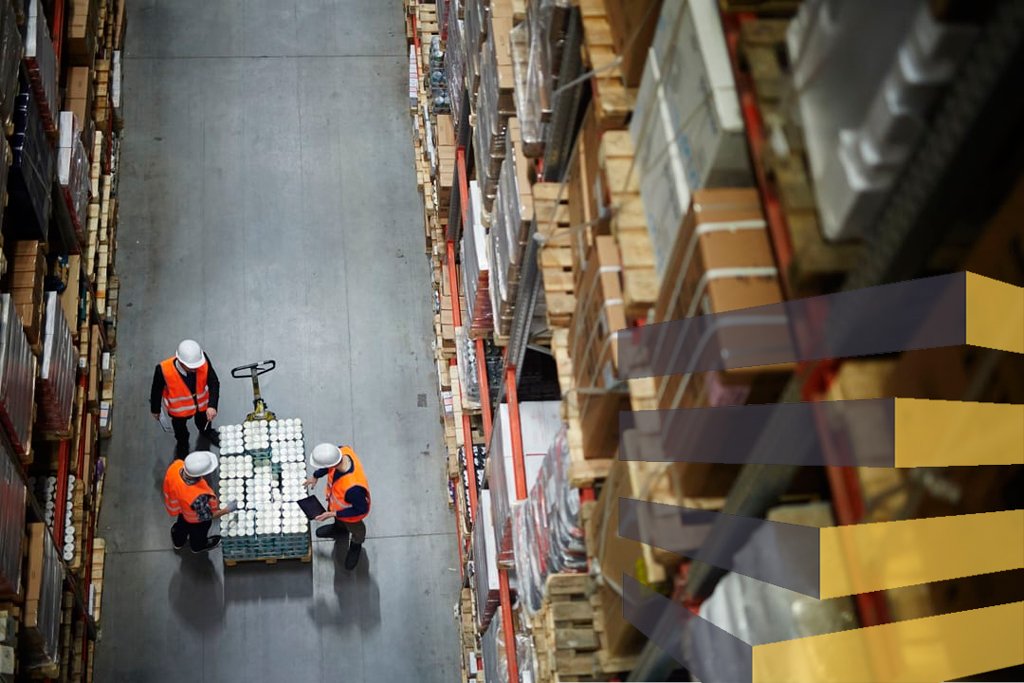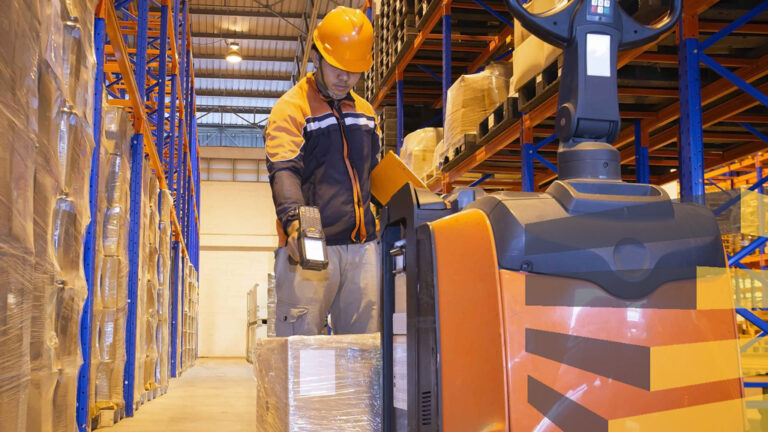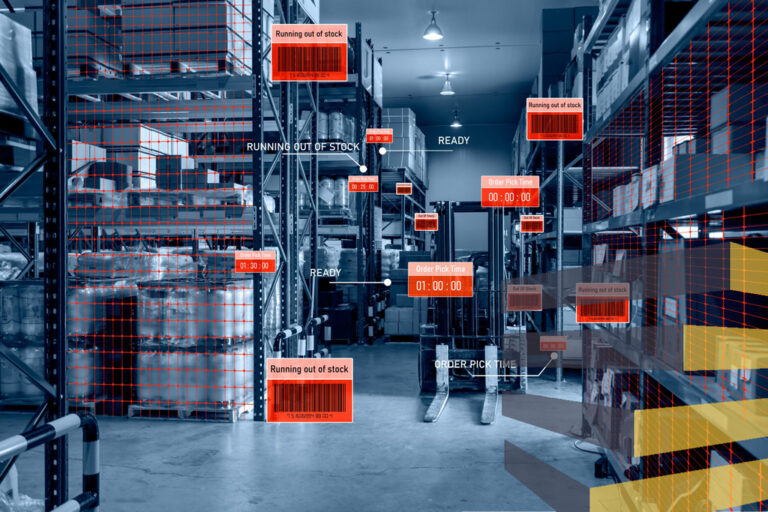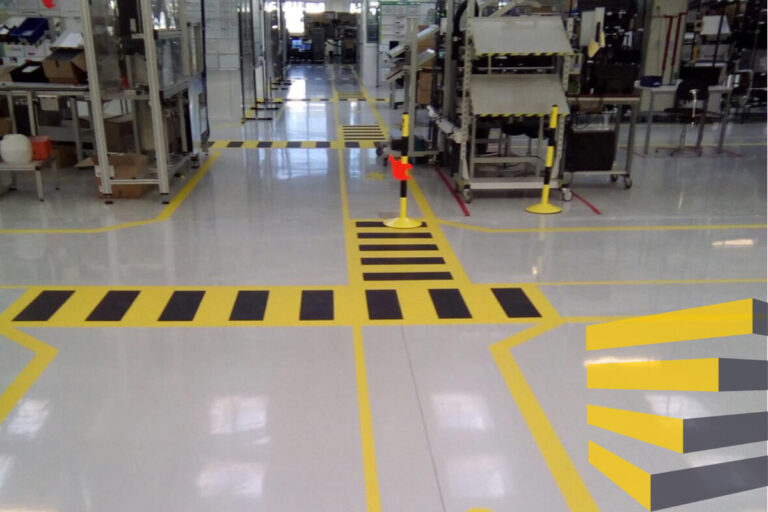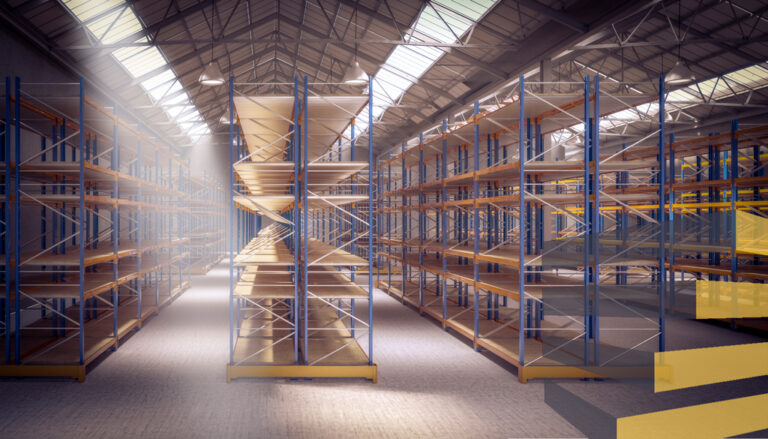Table of Contents
A warehouse is a dynamic environment where a wide range of activities take place and a variety of materials. For a smoother operation, all activities require skilled warehouse material handling habits that can optimize productivity and ensure the best delivery of orders.
When you understand what the best methods are and how they work, this can truly maximize operational efficiency. It is critical to use the correct equipment for each type of material you may be handling.
SEE ALSO: Warehouse racking installation: some key considerations
At Serviap Logistics we provide a range of warehouse setup services in Brazil, Mexico and the United States. Contact us today for more information.
What warehouse material handling is all about
The basics of warehouse material handling refer to the movement, storage, protection, and control of goods on the floor of your company. They oversee all kinds of activities, such as receiving and unloading goods, storing inventory, processing orders, and shipping them. In general, this operation can be divided into 3 stages:
- Receiving – the first step of the process, in which goods are unloaded, checked for damage, quality, and quantity, and then verified.
- Storage – organization is required to maintain a functional storage system and keep the products easily accessible and protected. This involves assigning the appropriate location and ensuring that the goods are safely stored.
- Retrieval – at this stage, orders are picked and assembled for shipment, so they can be delivered to customers.
Warehouse material handling: manual or automatic?
To accomplish all of that, material handling can be executed by both manual and automatic work, depending on the nature of the task to be performed and the material that needs moving.

Manual material handling is operated by humans. It can refer to the process in which the staff manually runs machinery to move and organize products around the warehouse. Along with that, the warehouse material handler can help with different stages of production orders, as well as maintaining inventory or keeping things clean.
Automatic material handling covers all operations that use machinery to reduce the amount of manual labor. The equipment can also be considered semi-automatic when they require human employees to drive, load, or unload goods, for example.
Automating the process can optimize production and diminish workplace safety risks. Smart usage of automatic warehouse material handling can boost your workers’ productivity and overall health, which is an important consideration for the Occupational Safety and Health Administration (OSHA) in the United States.
So, to better accommodate a warehouse’s many moving parts, a dynamic combination between manual and automatic material handling can be vital. Knowing which equipment to use in different situations is of critical importance.
What warehouse material handling equipment do you need?
The way you choose to organize equipment in your warehouse can substantially impact your material handling processes. For that, the variety of machinery available nowadays includes storage and handling equipment, industrial trucks, and engineered systems.
Conveyors
These are mechanical systems used to transport a variety of goods around the warehouse, from small packages to large, heavier items. They limit the amount of heavy lifting and can be supplemented by overhead handling methods, using hoists, cranes, and other equipment common to warehouse material handling.
Pallet jacks, forklifts, hand trucks, and other mobile equipment

Very common in warehouses, these can be used to move pallets of goods, heavy loads, boxes, and more. They can be either manually guided or automated units, depending on the necessities of each operation. Their high mobility makes navigation around aisles easier and faster.
Robotics
Robots can pick and pack orders, move goods around the warehouse, and even do inventory, without direct human intervention. They are not suitable for complex tasks, but for standardized and repetitive tasks they can excel. While still not generally as agile or flexible as humans, they can be much stronger.
While the upfront cost of robotic units can be high, prices are falling. Also, over time they become more cost effective as they do not require a salary. However, they are not free to run and will require maintenance and upkeep.
What warehouse material handling software do you need?
There are many reasons why you should consider implementing smart material handling into your warehouse routine. The most self-evident one is the optimization of space and logistics. You can get a more functional floor and alleviate limited storage space with efficient high-tech solutions.
Warehouse management systems (WMS):
Manage your warehouse operation with software systems that track inventory, analyze productivity, and automate processes. A WMS provides real-time visibility of inventory levels, location tracking, and accurate forecasting to improve warehouse efficiency, productivity, and accuracy.
WMSs can help you make informed decisions about inventory replenishment, space utilization, and order fulfillment, thereby enabling effective warehouse material handling management.
Automated storage and retrieval systems (ASRS):
These designed systems are used to automate storage, particularly in high-density configurations. They bring programs and machinery to help you with the later stages of operation, getting everything ready for shipment.
ASRS systems typically consist of an automated storage unit or rack, a retrieval system such as a robotic arm or conveyor system, and a software system that manages the entire process. This technology can be easily integrated with warehouse execution software (WES), warehouse management system software (WMS), or other controls.
How effective warehouse material handling will make your business better
Knowing the different types of warehouse material handling equipment can help you adopt the best equipment selection, training, and automation. This way, you can keep pace with the demands of the marketplace while minimizing risk and maximizing operational efficiency.
With an organized space, you’ll see a clear effect on workflow and an increase in productivity, by improving the flow of goods and reducing the time and effort required to move and store them. Offering a more sustainable workplace will allow your company to grow and prosper more healthily.
However, warehouse material handling is also essential for specific floor necessities. One of them is protecting the integrity of goods and providing special care for fragile and dangerous items. Using the right tools, you can minimize losses through accident and damage as well as avoid shutdowns.
Serviap Logistics can help you with warehouse setup
At Serviap Logistics, we work with our clients by offering warehouse setup assistance in Brazil, Mexico, and the United States. Our services include providing and installing signage, racking, and floor marking, among others. We also supply warehouse labels.
Contact us to find out more about how we can help you set up, refit, relocate, or optiomize a warehouse or distribution center.


